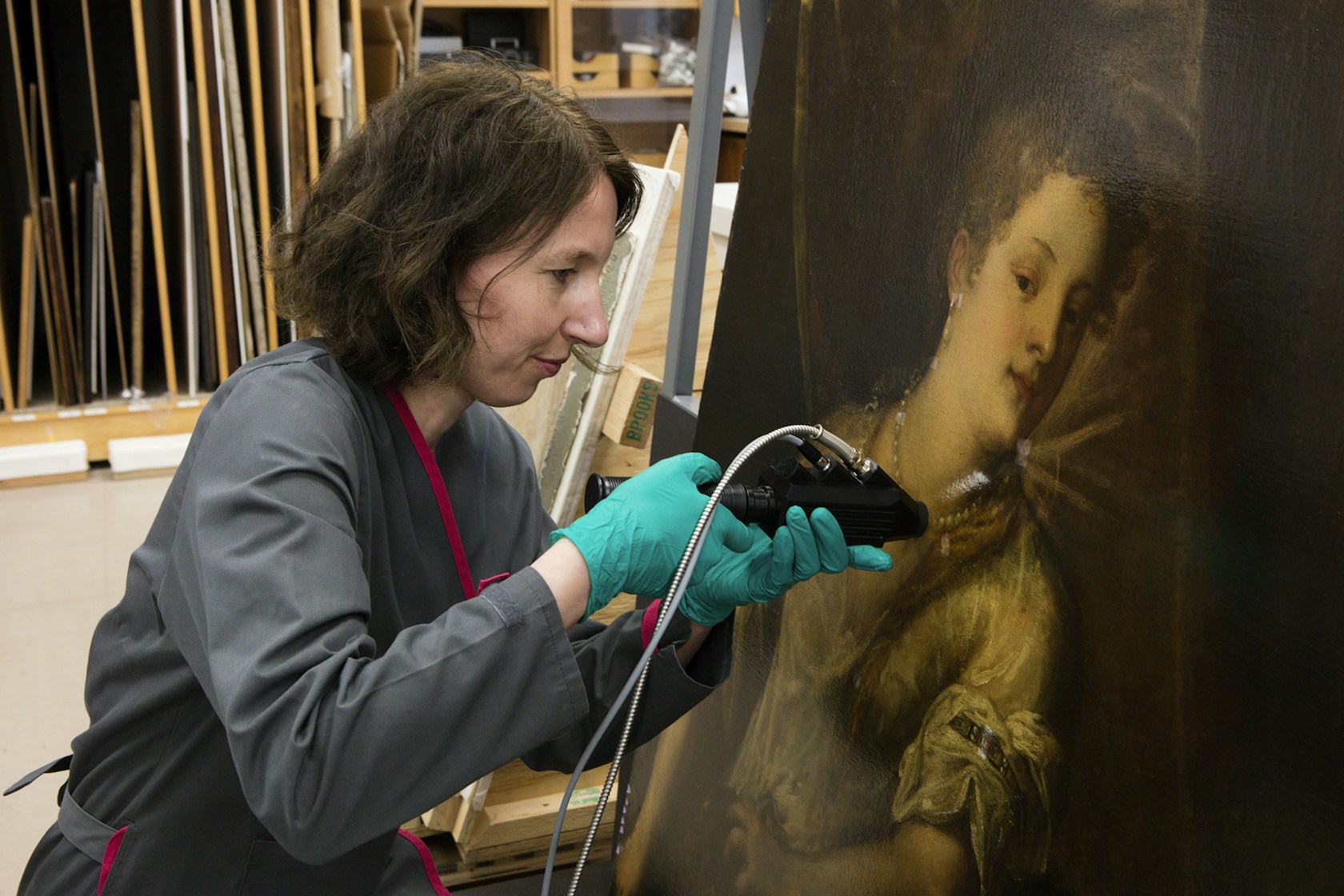
The Detroit Institute of Arts Reveals Titian’s Techniques After Restoring This Important Late Work by the Venetian Painter
Supported by the TEFAF Museum Restoration Fund, Titian’s “Judith and her Maidservant with the Head of Holofernes” has been preserved for future generations of visitors
- By TEFAF Editors
- Museum Restoration Fund
Founded in 1885, the Detroit Institute of Arts’ (DIA) collection consists of more than 65,000 objects dating from the earliest civilizations to the present. The museum’s collection of European art includes the painting Judith and her Maidservant with the Head of Holofernes (circa 1570), an important late work by the Venetian painter Titian (circa 1490–1576).
The painting was gifted by the industrialist Ford family and had been on view in the museum since it entered its collection in 1935—but no comprehensive conservation or analysis had taken place since. The museum was granted the TEFAF Museum Restoration Fund in 2017 for the restoration of this significant work, which aimed to improve the painting both physically and aesthetically.

Over time, layers of discolored varnish distorted the color balance and brushwork, affecting the painting’s legibility. Discolored retouches and areas of overpaint from previous restorations were also present throughout the work. The DIA utilized various technologies and imaging techniques to understand the painting’s creation and evolving condition over time, including high-resolution photography, X-radiography, infrared reflectography, vis-NIR spectroradiometry, liquid chromatography mass spectrometry, and the partial scanning of the painting with a large area micro-X-ray fluorescence spectrometer.


After thoroughly inspecting the paint layers, the thick and disguising varnishes and overpaint from previous restorations were removed, major paint losses were filled and retouched, and a multilayered varnish system was applied to isolate and saturate the paint. The recent treatment and research have allowed the DIA to reconsider the complex and nuanced ways in which Titian executed Judith and her Maidservant with the Head of Holofernes—such as his use of thin brushstrokes to build up details and to construct facial features and expressions through delicate shades and layers.



